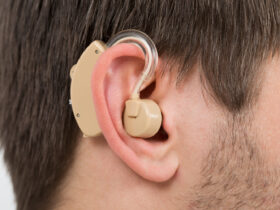Hearing aids have undergone tremendous innovation in the past few years thanks to the advancements in certain electronic components. You may not necessarily require the latest versions of these advanced features though, and they may also add a significant amount to the already high cost of hearing aids.
Here is a breakdown of 4 hearing aids, how they work, and if you need them:
Channels
The number of channels is the number of frequency ranges, or bands in the hearing frequency spectrum, that your hearing aid can split the sound it receives into. While it does offer functionality with some users having differing hearing loss in specific sections of the hearing frequency spectrum, unless you have a complex hearing profile, you may not require a large number of channels for an optimal hearing experience.
Directionality
Normally, our brains are able to process and determine where important sounds are coming from and to help us filter through the noise. However, hearing aids tend to boost all sounds in the environment. In noisy environments, hearings having directionality capabilities use multiple microphones and algorithms to focus on the sounds that are coming from straight ahead and cutting through the background noise. For those often spending time in noisy places, hearing aids with highly advanced directionality work best.
Noise Reduction And Speech Enhancement
Using digital processing, hearing aids with noise reduction and speech enhancement capabilities are able to filter out static sounds having a fixed pitch, like ambient background noise or the sound of the wind blowing. At the same time, it boosts the dynamic sounds that vary in tone and pitch such as speech, or from the TV. Most hearing aids today have a basic version of this feature. For those spending time in noisy environments, outdoors or playing sports where they may encounter a lot of wind, it is a good idea to get hearing aids with advanced versions of this feature.
Feedback Suppression
Feedback is a high loud, high-frequency sound that can be extremely annoying and is caused due to the hearing aid microphone picking up input from the hearing aid speakers. To prevent this, most hearing aids today are often able to digitally cancel the signal automatically. In the case that it is very bothersome for you, you can look to purchase hearing aids with advanced feedback suppression.

























